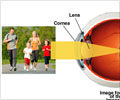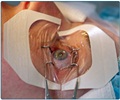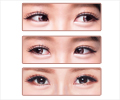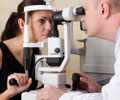Short sightedness (myopia) is more among children during the pandemic due to the increase in screen time and decrease in outdoor activities. This increases the risk of developing irreversible eye defects.

‘Increased screen time and decreased outdoor activities cause short sightedness (Myopia) among children.’





Myopia (short-sightedness) :Myopia is a condition where only the near objects can be seen clearly, and the far away objects will be blurry. This happens when the shape of the eye makes the light to refract incorrectly and it focuses the image in front of the retina and not on the retina.
The study was conducted in Hong Kong, one of the densely populated city having high rise buildings and small apartments. The pandemic had restricted the outdoor timings in children, and they spent more time indoors playing with gadgets. This had increased short-sightedness among them, and also the risk of developing other complications related to eyesight.
The study was conducted among 1793 children between the ages 6 to 8 and they were part of Hong Kong Children Eye Study (HKCES). About 709 children were monitored at the start of the pandemic for about 8 months (December 2019 to January 2020) and 1084 children were monitored for 3 years before the pandemic.The results showed that:
• 1 in 5 (19.5%) children of the pandemic group had developed myopia between January and August 2020 whereas only 1 in 3 children had developed myopia in the pre-pandemic group.
• Other factors like age,gender,length of monitoring, parental myopia and the amount of time spent outdoors increased the risk of short-sightedness among children.
Advertisement
According to researchers,“Despite all these insurmountable study limitations, our initial results still show an alarming myopia progression that warrants appropriate remedial action.”
Advertisement
Source: Medindia









